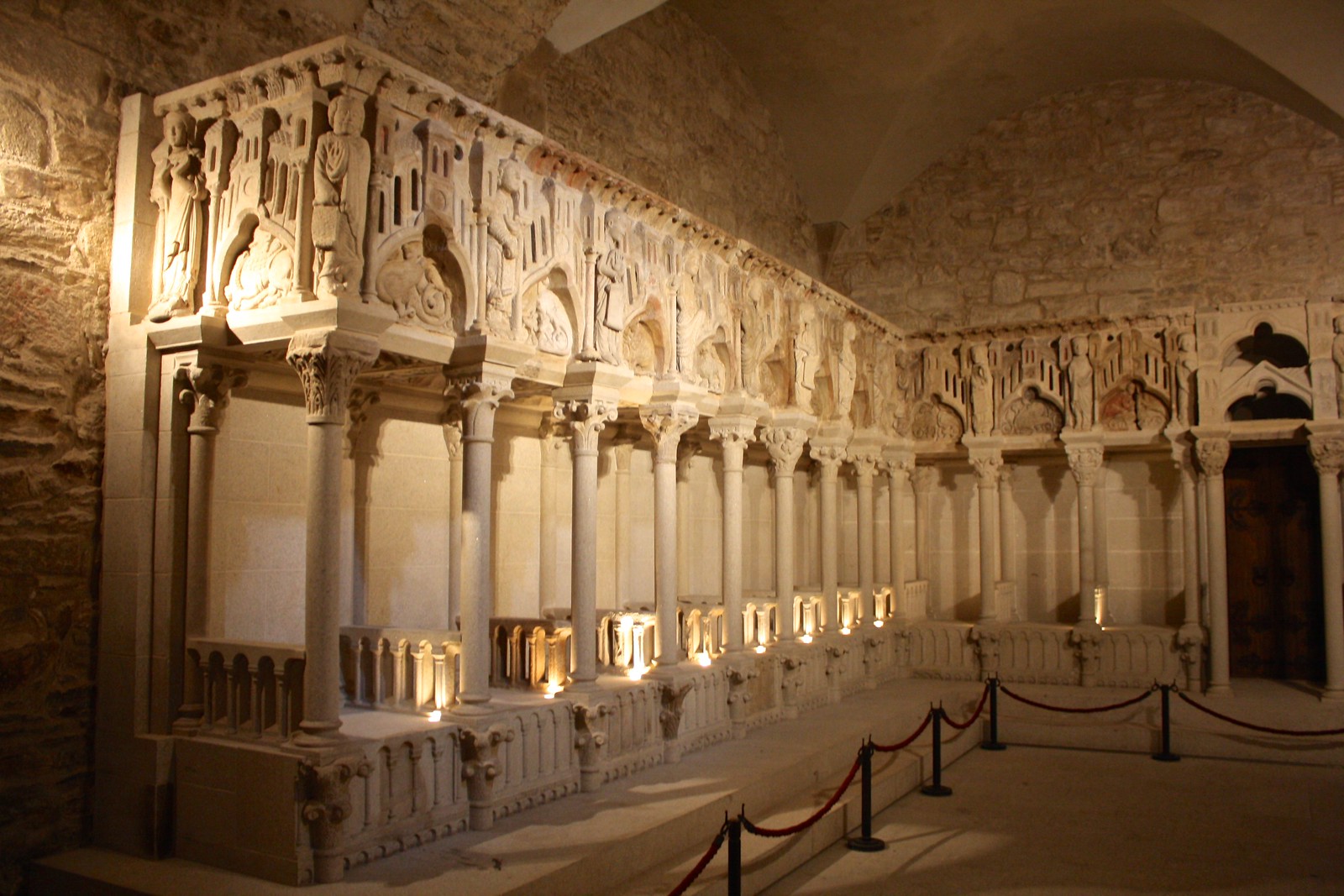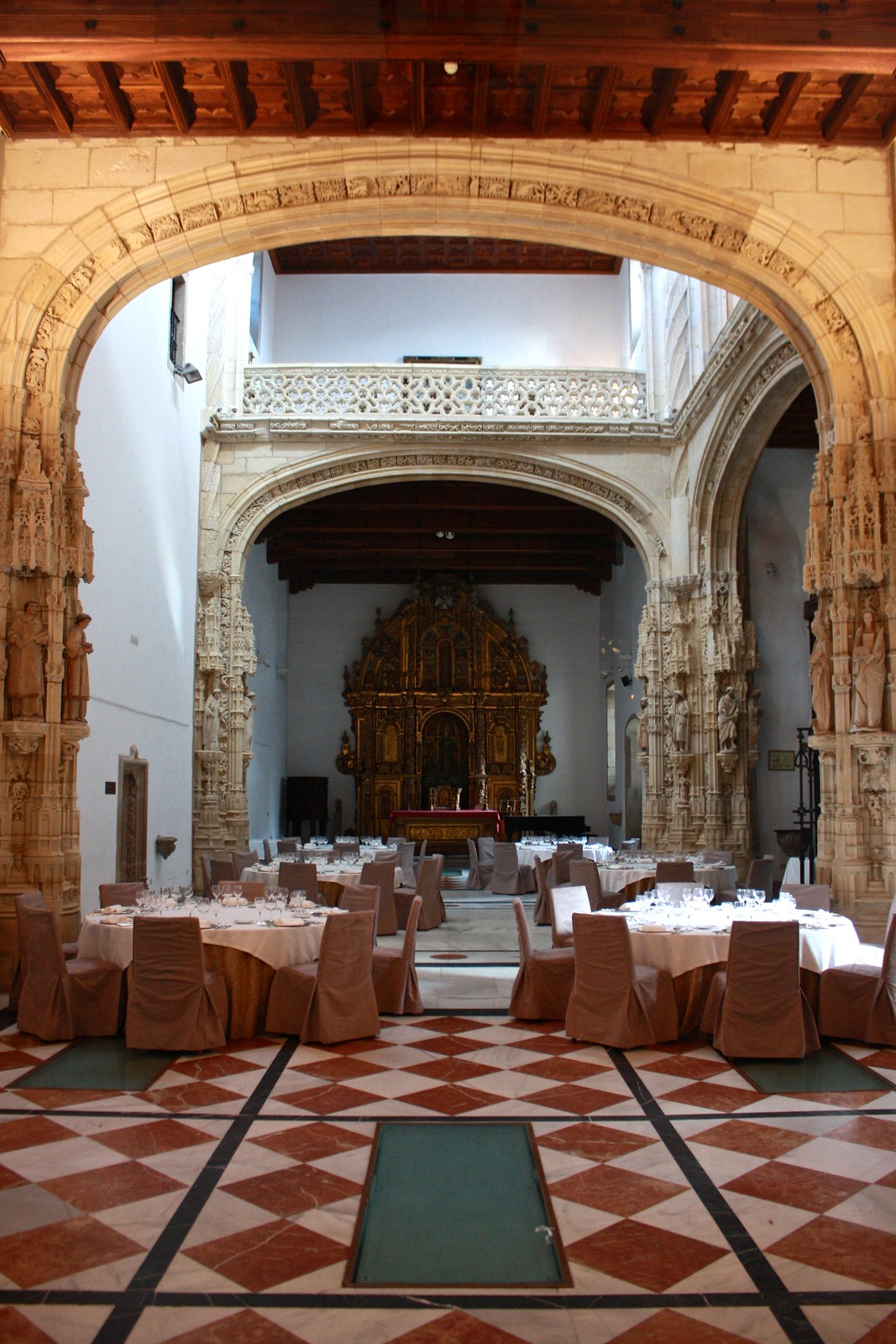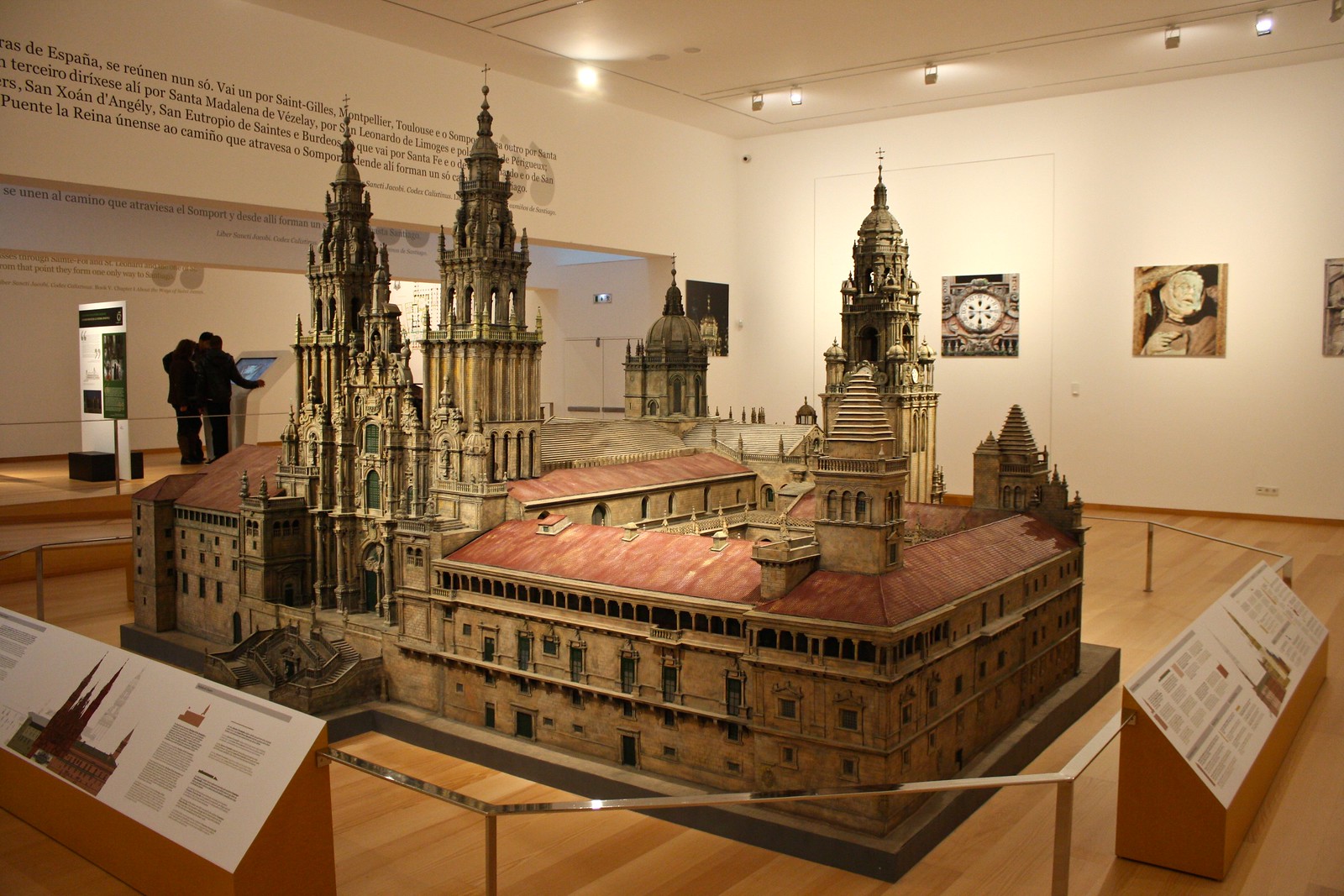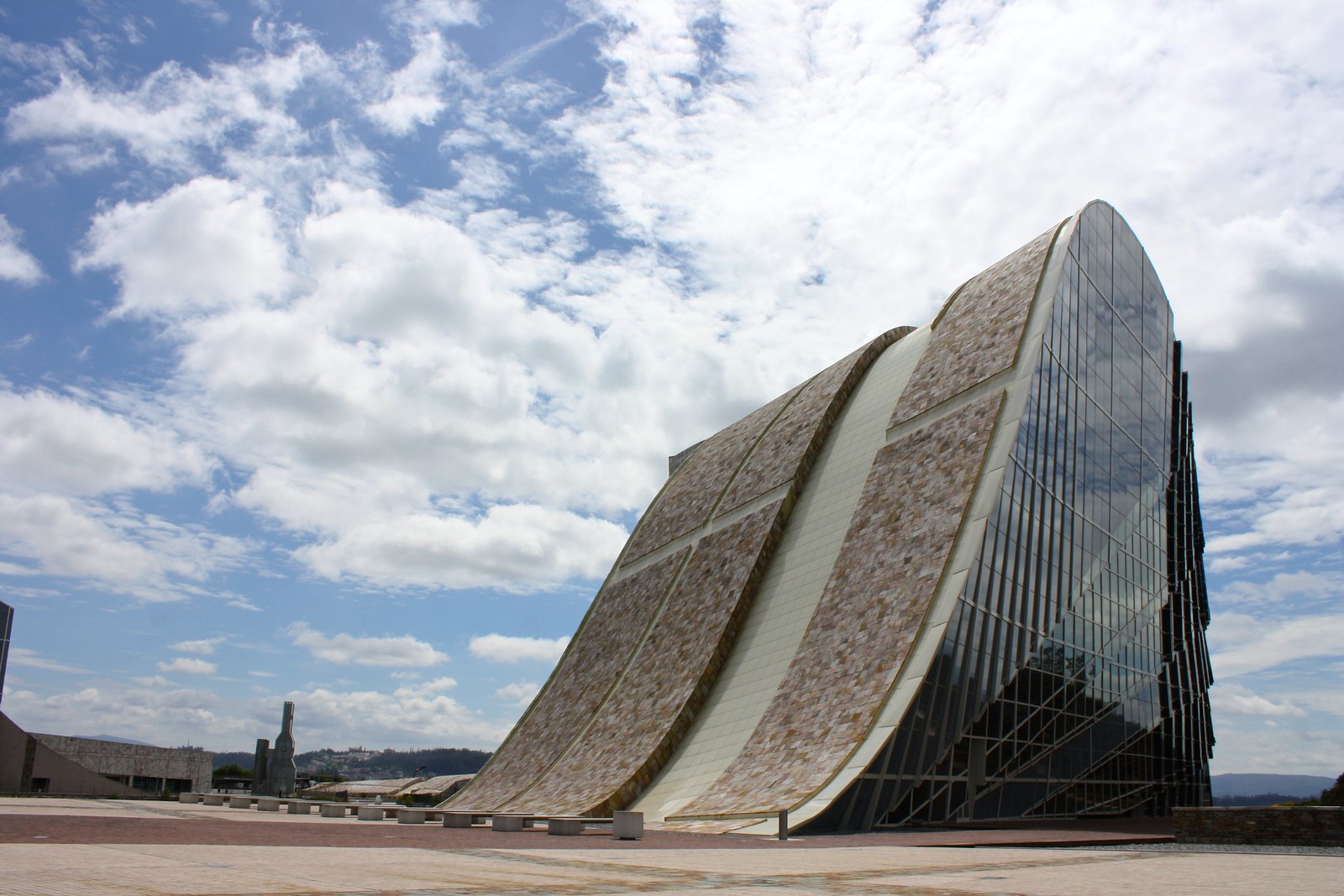10 Museums to Visit in Santiago de Compostela, Spain
Santiago de Compostela isn’t exactly a city known for its museums. As it’s the endpoint of the Camino de Santiago pilgrimage route, once you’ve checked in at the cathedral, there really isn’t that much to see and do besides checking out tapas bars in the granite-paved old town, strolling through the myriad of green parks and trails nearby, and generally relaxing after walking six hours a day for a month. That saying “it’s not the destination, it’s the journey” definitely applies to the Camino.
That’s not to say there’s nothing to check out in Santiago besides the purported resting place of the Apostle St. James. Although Santiago might not have museums on the grand scale of those in Lisbon, Madrid, or Barcelona, this city has several museums, exposition halls, and centers that will tell you more about the city’s past and how it influenced the Santiago we see today.
Like any Spanish cathedral’s treasury worth its salt, you’ll find the usual suspects in the Museo da Catedral: statues of saints, silver chalices, and impossibly-intricate hand-woven tapestries. What makes Santiago’s worth visiting is its recreation of the cathedral’s original stone-sculpted choir stalls. These granite choir stalls were lost for centuries but have since been excavated and reconstructed. A ticket to this museum lets you walk around the Gothic cloisters, which guard a large medieval fountain where stinky pilgrims would have bathed, and you can also hike up the stairs to peek out onto the main square from the upper-level balcony.
Address: Praza do Obradoiro
Founded by Ferdinand and Isabella themselves in 1492, this sprawling building served as Santiago’s central pilgrim hostel and hospital for almost five centuries. The “Catholic Monarchs’ Inn” is the city’s second-biggest historical monument, with Renaissance and Baroque courtyards galore, and now operates as a Parador or fancy state-run hotel. For a small entrance fee, you, too, can hobnob with the upper-crust guests who lodge here and explore the lavish halls and pretty courtyards.
Address: Praza do Obradoiro, 1
This ethnographic museum dedicates itself to teaching visitors about the Galicians, their history, their culture, and their traditions. Housed in an impressive former monastery, the Museo do Pobo Galego has all of its exhibits described exclusively in the Galician language to make you feel “immersed” in the language—but don’t worry; there are info cards for every room translated in Spanish and English. You’ll learn about everything from shipbuilding to bagpipe-playing, and you can even pay your respects to the most famous of Galician poets, Rosalía de Castro, who is buried here. The star of the show is a dizzying triple spiral staircase in the center of the museum.
Address: Rúa de San Domingos de Bonaval
The stark, modern box of the CGAC juxtaposes sharply with the ornate Baroque architecture of the next-door Museum of the Galician People, but it remains rooted in Galicia by using local granite stone as its primary building material. The contemporary art museum has no permanent collection; instead, it showcases various temporary exhibitions throughout the year, so your mileage may vary.
Address: Rúa de Valle Inclán, 2
Curious about how the Camino de Santiago came to be in the first place? Wondering how the cathedral was built and how the city of Santiago has changed over the centuries? Learn about the origins of the Camino, its legends, and its history, as well as a temporary exhibition or two in a building right across from the cathedral’s imposing clock tower. There, you can admire a huge scale model of the church that you can walk all around and appreciate its different architectural styles. The second floor holds a recreation of what the medieval, walled city of Santiago would have looked like.
Address: Praza das Praterías
Modern architecture aficionados ought to make a pilgrimage up the hillside of Monte Gaiás to check out this ambitious yet still-unfinished performing arts complex. Laid out on a plan that mirrors the shape of Santiago’s old town, the glass and stone buildings that make up the Cidade da Cultura undulate between gaping holes in the ground—the project was set on hold after going four times over budget. There’s usually a very high quality temporary exhibition going on here, so if you’re itchin’ for something to do, ride the once-hourly bus or hike up the hill.
Address: Monte Gaiás
Once the second-largest monastery in all of Spain (behind the El Escorial), the Mosteiro de San Martiño Pinario contains today a seminary, a modest guest-house, and a little museum that shows off the monastery’s former glory. You enter in beneath the soaring vaults of the monastery’s now-deconsecrated church, where you can pass from gilded side-chapel to gilded side-chapel on your way to an unbelievably-large wooden altarpiece completely covered in gold leaf—truly stunning on a sunny day. Doors and hallways lead you into further exhibit rooms that were once sacristies and treasuries, where you can admire religious art and interesting knick-knacks like taxidermied animals and an old printing press.
Address: Praza de San Martiño, 5 (enter the museum via the church’s huge green doors)
The Museo de Arte Sacra covers much of the same field that #7 above does, but focuses exclusively on religious art: paintings of the saints or on biblical themes, glossy Baroque sculptures, dusty altarpieces with fading gold leaf, and old books and documents beneath glass. The biggest draw for me was the original stone altar that was set up over Santiago’s supposed remains, a truly ancient artifact. The museum is run by the same nuns who live in the attached convent, so don’t forget to walk around to the other side of the convent to get some freshly-baked shortbread cookies afterward!
Address: Vía Sacra, 5 (the museum’s entrance is inside the Church of San Paio de Antealtares)
The monks who continue in the tradition of St. Francis also manage a small archaeological museum dedicated to all things Israel and Palestine, ranging from Stone and Iron Age artifacts to a giant scale model of the Church of the Holy Sepulcher in Jerusalem. You might overlook its entrance as it hides in the shadows between two side-chapels in the glorious Church of San Francisco, but a monk should be there to let you in.
Address: Rúa do Campiño de San Francisco, 3
Set in a typical Galician mansion in the always-busy Toural square, this museum is dedicated to the life and works of local painter Eugenio Granell, who died in 2001 as the last of the Spanish surrealist painters. His fine paintings alone justify the paltry 2€ admission fee, but there’s also works by fellow Spanish surrealists like Joan Miró and Pablo Picasso to draw you in.
Address: Praza do Toural
Have you been to any of these museums before? Which one would you be most interested in visiting? Comment below!
That’s not to say there’s nothing to check out in Santiago besides the purported resting place of the Apostle St. James. Although Santiago might not have museums on the grand scale of those in Lisbon, Madrid, or Barcelona, this city has several museums, exposition halls, and centers that will tell you more about the city’s past and how it influenced the Santiago we see today.
1) The cathedral museum
 |
| The reconstructed stone choir stalls |
Like any Spanish cathedral’s treasury worth its salt, you’ll find the usual suspects in the Museo da Catedral: statues of saints, silver chalices, and impossibly-intricate hand-woven tapestries. What makes Santiago’s worth visiting is its recreation of the cathedral’s original stone-sculpted choir stalls. These granite choir stalls were lost for centuries but have since been excavated and reconstructed. A ticket to this museum lets you walk around the Gothic cloisters, which guard a large medieval fountain where stinky pilgrims would have bathed, and you can also hike up the stairs to peek out onto the main square from the upper-level balcony.
Address: Praza do Obradoiro
2) Hostal dos Reis Católicos
 |
| Once a chapel, now a dining room |
Founded by Ferdinand and Isabella themselves in 1492, this sprawling building served as Santiago’s central pilgrim hostel and hospital for almost five centuries. The “Catholic Monarchs’ Inn” is the city’s second-biggest historical monument, with Renaissance and Baroque courtyards galore, and now operates as a Parador or fancy state-run hotel. For a small entrance fee, you, too, can hobnob with the upper-crust guests who lodge here and explore the lavish halls and pretty courtyards.
Address: Praza do Obradoiro, 1
3) Museum of the Galician People
 |
| The triple staircase |
This ethnographic museum dedicates itself to teaching visitors about the Galicians, their history, their culture, and their traditions. Housed in an impressive former monastery, the Museo do Pobo Galego has all of its exhibits described exclusively in the Galician language to make you feel “immersed” in the language—but don’t worry; there are info cards for every room translated in Spanish and English. You’ll learn about everything from shipbuilding to bagpipe-playing, and you can even pay your respects to the most famous of Galician poets, Rosalía de Castro, who is buried here. The star of the show is a dizzying triple spiral staircase in the center of the museum.
Address: Rúa de San Domingos de Bonaval
4) Galician Center of Contemporary Art
 |
| The modern building |
The stark, modern box of the CGAC juxtaposes sharply with the ornate Baroque architecture of the next-door Museum of the Galician People, but it remains rooted in Galicia by using local granite stone as its primary building material. The contemporary art museum has no permanent collection; instead, it showcases various temporary exhibitions throughout the year, so your mileage may vary.
Address: Rúa de Valle Inclán, 2
5) Pilgrimages Museum
 |
| Scale model of the cathedral |
Curious about how the Camino de Santiago came to be in the first place? Wondering how the cathedral was built and how the city of Santiago has changed over the centuries? Learn about the origins of the Camino, its legends, and its history, as well as a temporary exhibition or two in a building right across from the cathedral’s imposing clock tower. There, you can admire a huge scale model of the church that you can walk all around and appreciate its different architectural styles. The second floor holds a recreation of what the medieval, walled city of Santiago would have looked like.
Address: Praza das Praterías
6) City of Culture of Galicia
 |
| Cidade da Cultura |
Modern architecture aficionados ought to make a pilgrimage up the hillside of Monte Gaiás to check out this ambitious yet still-unfinished performing arts complex. Laid out on a plan that mirrors the shape of Santiago’s old town, the glass and stone buildings that make up the Cidade da Cultura undulate between gaping holes in the ground—the project was set on hold after going four times over budget. There’s usually a very high quality temporary exhibition going on here, so if you’re itchin’ for something to do, ride the once-hourly bus or hike up the hill.
Address: Monte Gaiás
7) The diocesan museum
 |
| Looking into the huge main nave |
Once the second-largest monastery in all of Spain (behind the El Escorial), the Mosteiro de San Martiño Pinario contains today a seminary, a modest guest-house, and a little museum that shows off the monastery’s former glory. You enter in beneath the soaring vaults of the monastery’s now-deconsecrated church, where you can pass from gilded side-chapel to gilded side-chapel on your way to an unbelievably-large wooden altarpiece completely covered in gold leaf—truly stunning on a sunny day. Doors and hallways lead you into further exhibit rooms that were once sacristies and treasuries, where you can admire religious art and interesting knick-knacks like taxidermied animals and an old printing press.
Address: Praza de San Martiño, 5 (enter the museum via the church’s huge green doors)
8) Museum of Sacred Art
 |
| Inside the church |
The Museo de Arte Sacra covers much of the same field that #7 above does, but focuses exclusively on religious art: paintings of the saints or on biblical themes, glossy Baroque sculptures, dusty altarpieces with fading gold leaf, and old books and documents beneath glass. The biggest draw for me was the original stone altar that was set up over Santiago’s supposed remains, a truly ancient artifact. The museum is run by the same nuns who live in the attached convent, so don’t forget to walk around to the other side of the convent to get some freshly-baked shortbread cookies afterward!
Address: Vía Sacra, 5 (the museum’s entrance is inside the Church of San Paio de Antealtares)
9) Holy Land Museum
 |
| South façade of the church |
The monks who continue in the tradition of St. Francis also manage a small archaeological museum dedicated to all things Israel and Palestine, ranging from Stone and Iron Age artifacts to a giant scale model of the Church of the Holy Sepulcher in Jerusalem. You might overlook its entrance as it hides in the shadows between two side-chapels in the glorious Church of San Francisco, but a monk should be there to let you in.
Address: Rúa do Campiño de San Francisco, 3
10) Eugenio Granell Foundation Museum
Set in a typical Galician mansion in the always-busy Toural square, this museum is dedicated to the life and works of local painter Eugenio Granell, who died in 2001 as the last of the Spanish surrealist painters. His fine paintings alone justify the paltry 2€ admission fee, but there’s also works by fellow Spanish surrealists like Joan Miró and Pablo Picasso to draw you in.
Address: Praza do Toural
Have you been to any of these museums before? Which one would you be most interested in visiting? Comment below!
